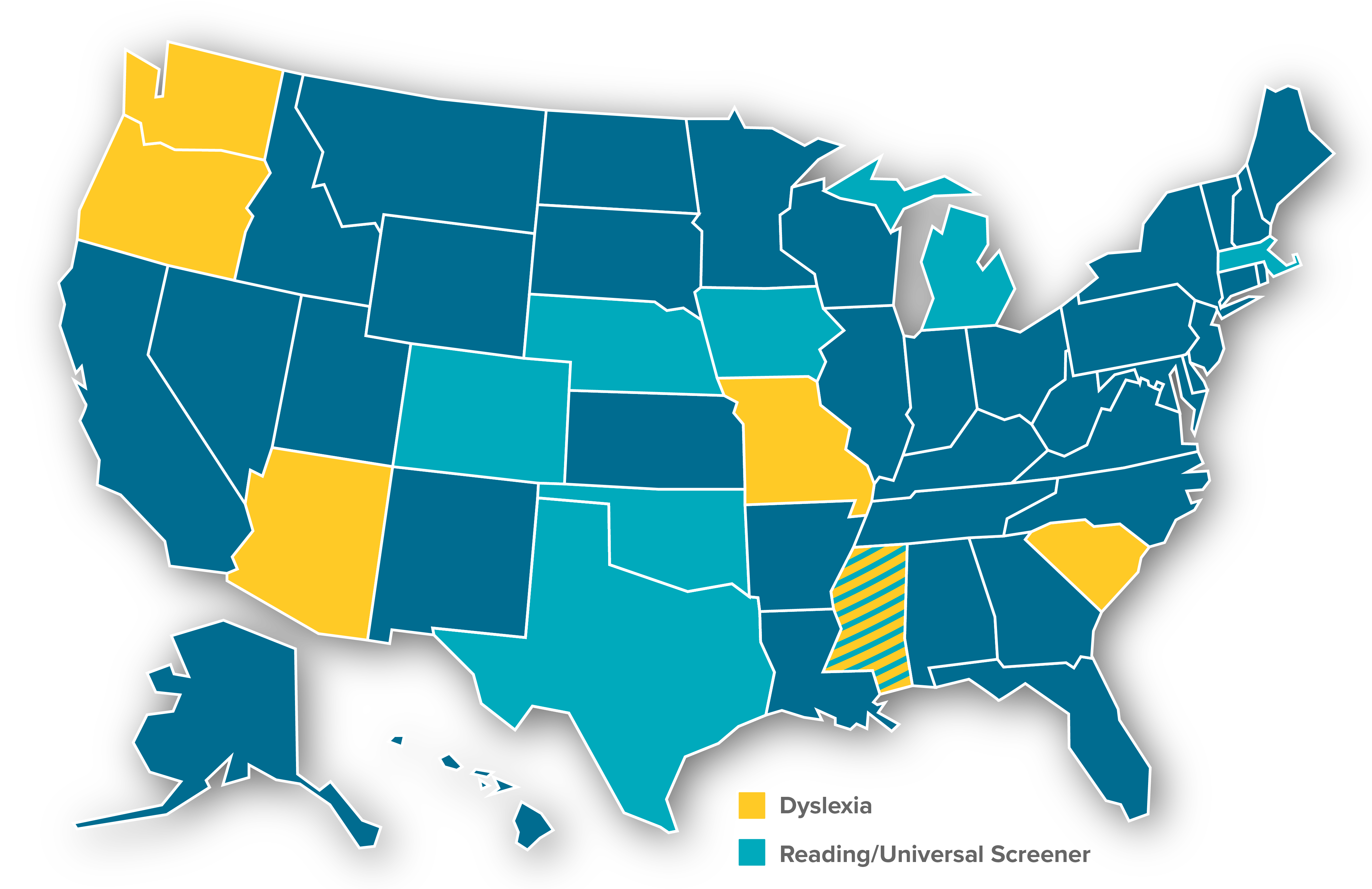Dyslexia is a widely-recognized reading disorder that affects both learning-to-read and reading skills over one's lifespan. Individuals with dyslexia can learn to read, although it often requires additional intensive instruction. Once dyslexia is diagnosed, a treatment plan that includes direct and systematic instruction of the major components of reading is needed.
Alongside the treatment plan, students benefit from weekly progress monitoring to document reading improvement. Such monitoring requires setting a goal for the student to reach by the end of the current school year.
The following article will explain the importance of goal-setting, details about progress monitoring, and how carefully-selected goals can play a role in the best reading outcomes for students with dyslexia.
Setting Goals
All students whose current reading skills are below grade-level expectations need additional instruction in order to improve and catch up to their peers. The exact amount and type of additional instruction needed will depend on the specific reading deficits that each student has.
Schools often use a multi-tier system of support (MTSS) to organize and provide supplementary reading instruction for those students who need it. When thinking about each student’s reading goals two important considerations are:
- How much growth is needed for the student to catch up to peers in the current school year, and
- Whether the goals are realistic or ambitious.
Catch-Up Growth
Accelerated growth for students who need to catch up to their peers is very important because without it poor readers are likely to experience the “Matthew Effect” (Stanovich, 1986). This term refers to a quote from the Christian Bible in which “the poor get poorer and the rich get richer.”
As noted by Keith Stanovich and others, unless focused efforts are applied, students who learn to read easily and without extra teacher support will go on to enjoy reading and the “riches” from a lifetime of reading success. In contrast, those students who struggle to learn how to read—for whatever reason—are likely to dislike reading and avoid it, thus continuing to experience literary poverty.
To prevent the Matthew Effect schools need to address students’ reading problems as soon as they are known and focus on “catch-up” growth. Catch-up growth refers to how students who start out behind their peers need to improve their reading skills at a faster rate than grade-level peers so they can master missing skills and be able to read as well as classmates who started out with better reading skills.
A Case Study: Kennewick, Washington
The town of Kennewick, Washington documented the steps needed to provide catch-up growth to students with initially low reading scores (Rosier, Fielding, and Kerr, 2007). Sometimes known as the “Kennewick Model,” this school district recognized that too many students were experiencing Matthew effects and enlisted the school board, community members, teachers, and parents to provide improved reading instruction for all students (Fielding, 2009).
The Kennewick school board set a goal for at least 90% of students to demonstrate reading proficiency each year. Through a sustained multi-year effort, this goal was reached.
Key features of the “Kennewick Model” are that it was a comprehensive system of supports like an MTSS and allocated school resources for evidence-based reading instruction at all grade levels (Fielding, 2009). Such methods include direct and systematic instruction which has been found to be effective for students with dyslexia and other reading difficulties. Importantly, students with dyslexia typically demonstrate very significant reading deficits and need to make catch-up growth in order to read well enough to graduate from high school.
Realistic or Ambitious?
A second important consideration about reading goals for students with dyslexia is whether they should be realistic or ambitious. These terms refer to the rates of reading progress that are typical for all students and those necessary in order for students to achieve catch-up growth.
Realistic goals reflect the typical rate of improvement in reading skills for all students when provided with general education reading instruction. Research suggests that student reading growth varies across grade levels.
Specifically, students typically improve more quickly in kindergarten through second grade and then show slower growth in the remaining elementary grades (Fuchs, Fuchs, Hamlett, Walz, & Germann, 1993). For example, students are likely to improve by adding two words read correctly (WRC) each week in first grade and this rate changes to less than one WRC by sixth grade.
A student’s rate of improvement (ROI) will also vary in relation to the type and amount of reading instruction. Reading instruction that is direct and systematic and provided every day is likely to result in a larger ROI than incidental teaching (National Reading Panel, 2000).
Progress Monitoring Goal Values
FastBridge Learning recommends that students’ goals be set in relation to the instruction provided. To assist teams with goal setting, all FAST™ progress monitoring goal values are labeled to indicate how challenging the goal is using the following terms:
-
- Very realistic
- Realistic
- Ambitious
- Very ambitious
Educators are advised to select realistic or ambitious goals because these are linked with expected ROI that will help a student catch up to grade level expectations. The realistic goal value is set at 1.5 WRC, which is the amount of weekly growth observed in typical readers across grades.
Although higher goals can be set, it is important to consider whether it’s likely that the student can reach the goal in the time available.
Setting a goal that is significantly higher than typical growth (e.g., 5 WRC per week) is likely to result in the student not meeting the goal. Importantly, students with dyslexia often require more time to develop reading proficiency. For this reason, goals higher than 2 WRC per week are not recommended for students with dyslexia.
Given that students with dyslexia need to make catch-up growth, reasonably ambitious goals that range from 1.6 to 2 WRC per week are recommended.
Progress Monitoring
In addition to setting an attainable goal, it is important for progress monitoring to happen often enough for the student and teacher to review the data and adjust instruction if needed. If you are new to progress monitoring, review our guide to getting started.
Frequency
For all students with significant reading deficits, weekly progress monitoring is recommended. Weekly assessment with CBMreading or an earlyReading subtest is sensitive to student growth, yet not so frequent as to take time away from instruction.
Data Review
In order to know if a student is making effective progress toward a reading goal, the data needs to be reviewed at regular intervals. That said, there must be enough data points available in order for the scores to be reliable. Prior research suggested that at least 10 to 12 scores are needed before progress data can be interpreted (Christ, Zopluoglu, Monaghen, & Van Norman, 2013).
Recently, a new method for calculating the trend and expected direction of future growth was developed by Christ and Desjardins (2018), resulting in the FAST Projection™ line. Using Bayesian statistics, this alternative method can reliably predict a student’s future growth with as few as six data points. Knowing that student progress can vary for a number of reasons, it is best to review progress data every four to six weeks to see if the ROI is on track to meet the goal or if an instructional change is needed.
Although students with dyslexia are likely to experience challenges when learning to read, they can become proficient readers. Effective treatments and instruction for dyslexia are well documented and widely available. In addition, such instructional methods are beneficial for all students with reading delays.
When specialized reading instruction is provided, individual student learning goals should be set to assist students in catching up to grade-level standards. Students who participate in reading intervention should be monitored weekly in order to track their progress toward reading goals.
Students with dyslexia are likely to make slower reading progress than other students, however, they benefit from reasonably ambitious goals, depending on the type and frequency of instruction. With direct and systematic instruction, weekly progress monitoring, appropriate goals, and regular data review, students with dyslexia can and will become proficient readers.
References
Christ, T. J. & Desjardins, C. D. (2018). Curriculum-based measurement of reading: An evaluation of frequentist and Bayesian methods to model progress monitoring data. Journal of Psychoeducational Assessment, 36, 55-73. DOI: 10.1177/0734282917712174
Christ, T. J., Zopluoglu, C., Monaghen, B., & Van Norman, E. R. (2013). Curriculum-based measurement of oral reading (CBM-R) progress monitoring: Multi-study evaluation of schedule, duration, and dataset quality on progress monitoring outcomes. Journal of School Psychology, 51, 19-57. DOI:10.1016/j.jsp.2012.11.001
Fielding, L. (2009). The Kennewick model: Annual growth, catch-up growth. Retrieved from: https://www.fastbridge.org/wp-content/uploads/2019/04/Fielding_PK.pdf
Fuchs, L., Fuchs, D., Hamlett, C., Walz, L., & Germann, G. (1993). Formative evaluation of academic progress - How much growth can we expect. School Psychology Review, 22, 27-48.
National Reading Panel (U.S.), & National Institute of Child Health and Human Development (U.S.). (2000). Report of the National Reading Panel: Teaching children to read. An evidence-based assessment of the scientific research literature on reading and its implications for reading instruction: Reports of the subgroups. Washington, D.C.: National Institute of Child Health and Human Development, National Institutes of Health.
Rosier, P., Fielding, L., Kerr, N. (2007). Annual growth, catch-up growth: Annual growth for all students, catch-up growth for those who are behind. Kennewick, WA: New Foundation Press.
Stanovich, Keith E. (1986). Matthew effects in reading: Some consequences of individual differences in the acquisition of literacy. Reading Research Quarterly, 22, 360-407.


![[eBook] Get the Whole Picture: Using Social, Emotional and Behavioral Assessments to Support Student Success](https://5196620.fs1.hubspotusercontent-na1.net/hubfs/5196620/AdobeStock_157265506.jpeg)





